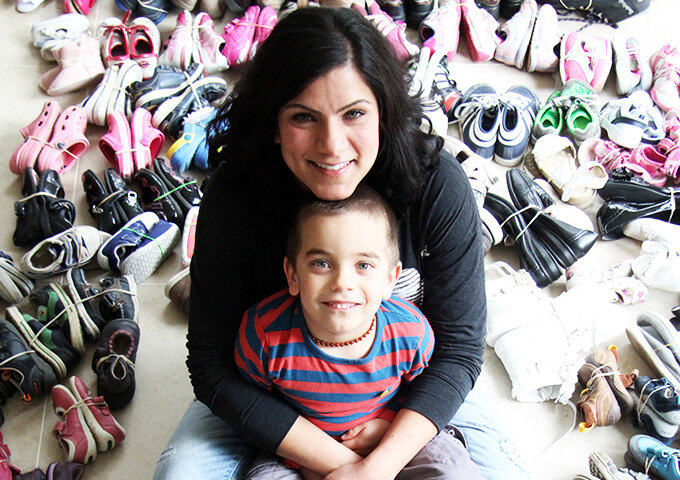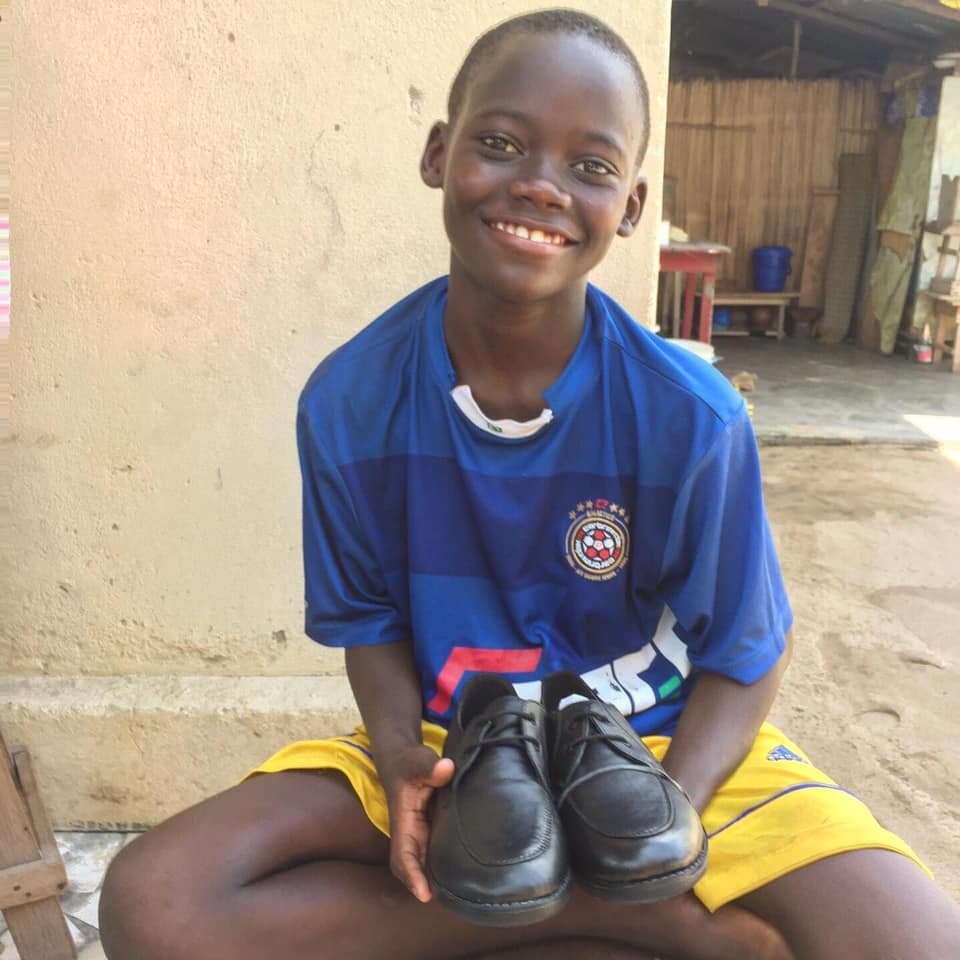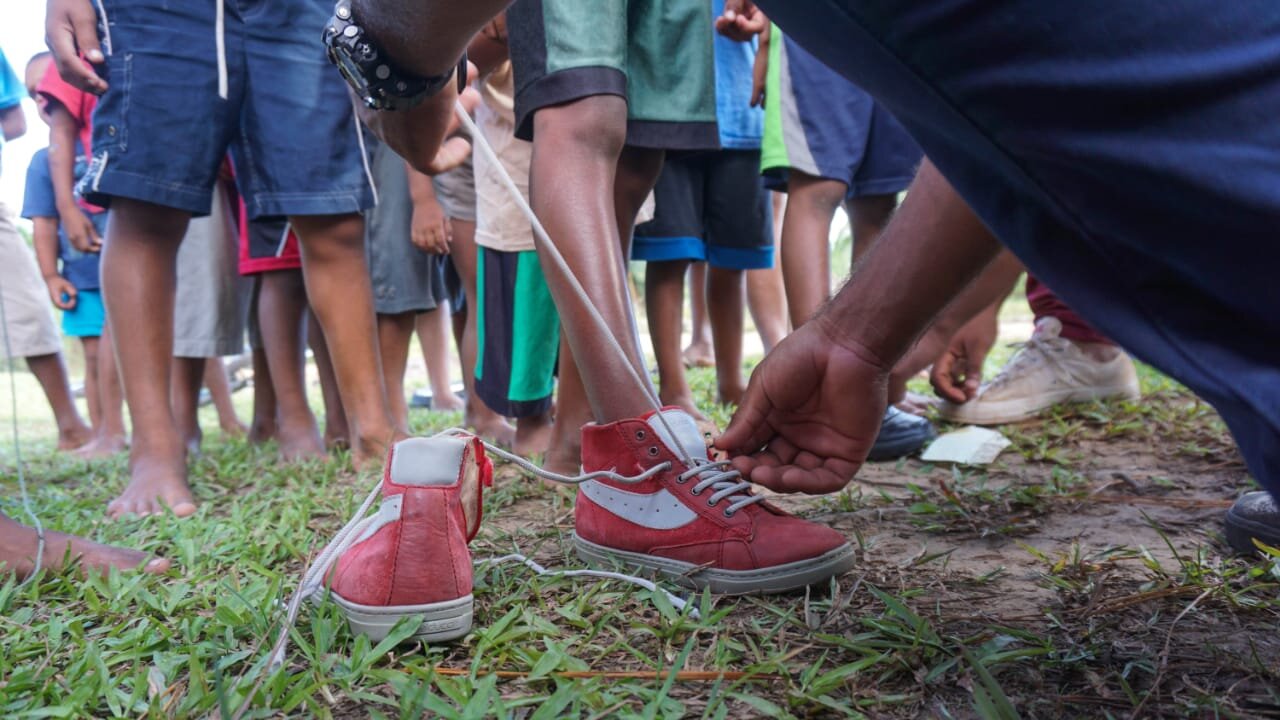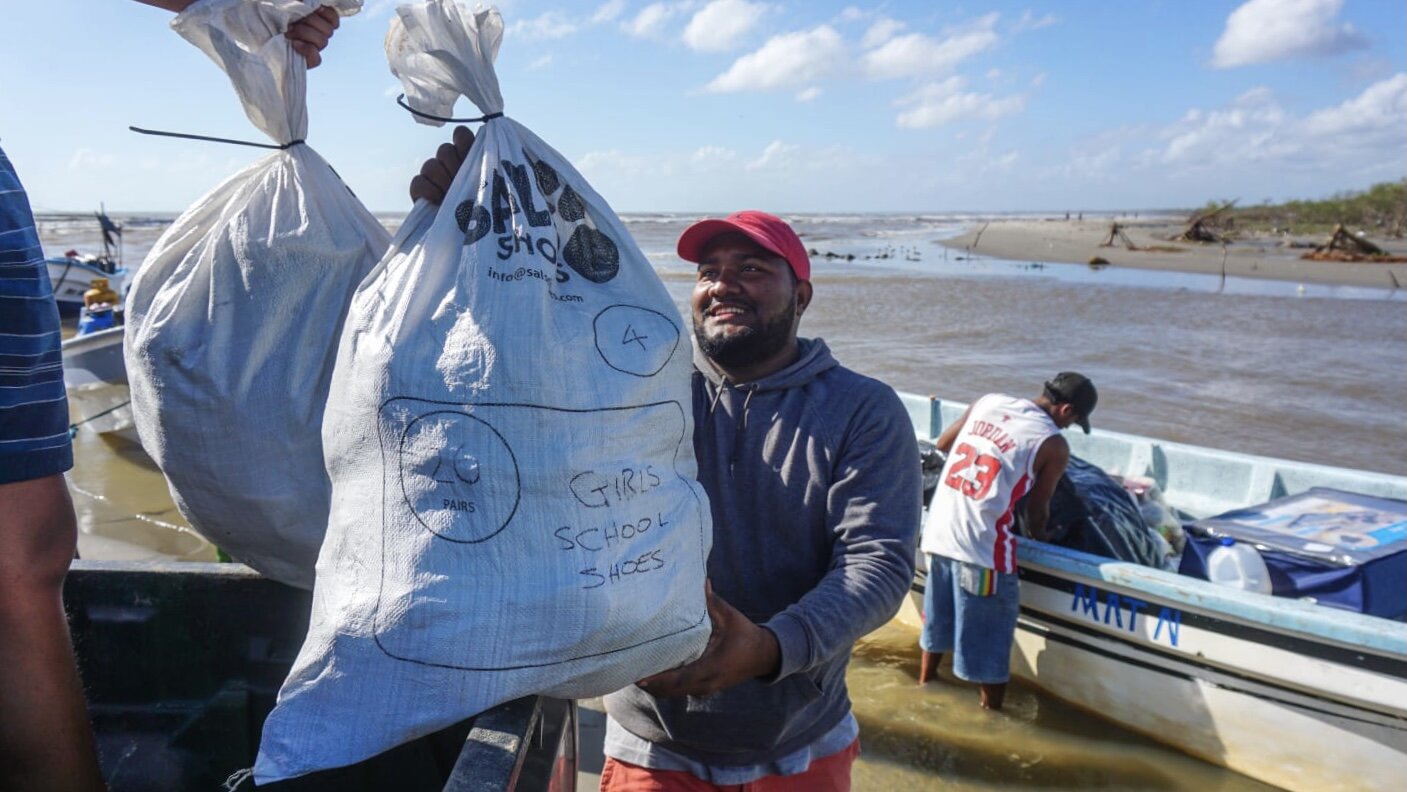CJ Bowry: Generosity in the sole
Sometimes an idea, or solution, can be so obvious it’s literally staring us in the face. But when stumbled upon, they are normally the ideas that are most rewarding.
CJ’s story is born out of one such idea that has now become a leading charity worldwide and one which continues to grow exponentially. Not only are CJ’s achievements staggering in the short space of time since her charity launched, she is also a really nice human who is inspiring to talk to.
Not long after CJ’s son Sal started walking, (her husband is half Italian, their son’s full name is Salvatore, she found an accumulation of out-grown shoes literally months later. “Shoes barely the size of my hand that cost me the best part of thirty quid on the high-street and still had so much wear left in them”, she says.
Not really knowing why at that moment it bothered her particularly, “I could have just put them all in a bag in the loft, or into the shoe recycling bins” she says, CJ believes it was probably down to the cost and the waste. She contacted a number of shoe charities who send shoes all over the globe, from Europe to Asia and beyond to ask specifically where her son’s shoes would end up. But the exact location couldn’t be pin-pointed and it was something that didn’t sit well.
Thinking back to when she was a child, CJ says, “My father is a civil engineer, so I grew up overseas. I remember how we would see so-called ‘charity items’ being re-sold on the black market. Knowing that I had already paid once for my son’s shoes, I wanted to be reassured that the new owners wouldn’t have to pay for them too.”
She ended up sending a bag of Sal’s outgrown shoes to a friend who was volunteering on a children’s cancer ward in Zambia, a place more than familiar to CJ as it was where she attended primary school. She recalls, “I went to the post office and sent the box off, thinking no more about it, just patting myself on the back and feeling great about my good deed.”
A few weeks later CJ received some photographs showing children wearing the shoes she had sent, overwhelmed specifically by one small boy who was wearing Sal’s first ever pair of shoes, the pair now being his first ever. I can see she’s a little emotional and it’s had a lasting effect. “I know that the ‘do good, so feel good’ factor of charity can be selfish and receiving that photo definitely did make me feel good. But it also left me wanting to do a bit more. So, I posted the picture onto my personal Facebook page and the following day I had over fifty friends saying ‘we’ve got loads of shoes too, who should we send them to?’”
So then CJ found herself back in the post office, sending bags of her friend’s shoes and subsequently receiving photographs back once again. She took to social media again to repost the images, tagging friends, who in turn had their friends wanting to do the same, and before long she had hundreds of enquiries from complete strangers. She says, “For all of its flaws, when harnessed for good, the power of social media is astounding.”
With a growing need and, more importantly, hundreds of children’s shoes now needing new feet, CJ decided impulsively to do something about it. Admitting “no shame whatsoever” in asking for help, calling in favours from like-minded friends and colleagues, she had Sal’s Shoes set up, ready to go with a logo, website and active social media accounts in three days.
Starting immediately, CJ contacted three locations to hold a Sal’s Shoes collection bin, a nursery school, a primary school and a children’s soft play café and within days, these bins were overflowing. Fast forward seven years, they have now distributed a phenomenal two million pairs in 49 countries.
The staggering ‘snowball’ effect has seen the numbers grow from 5,000 pairs in their first year, to 20,000 thousand pairs the following year and around 300,000 pairs this year. But it isn’t just the numbers that are impressive, it’s the integrity with which CJ and her team continue to conduct business within the organization. Their ethos has never been compromised and they have remained true to their original values, knowing where each pair of shoes sent out finds its new owner.
“We know where every single pair of shoes is walking again”
“We know where every single pair of shoes is walking again,” says CJ. “That could be a collection of shoes from an affluent school being sent to an inner-city school for less privileged children, or winter boots that were sent to us in October which we have then sent on to Ukraine by December, helping to keep the children’s feet warm in conditions as low as -10 degrees.”
But the evolution of the process proves to be even better than what they initially thought, something that CJ says, “never occurred to me.” She explains, “Sal’s Shoes are being worn until there is no wear left in them. Our target donor audience are the parents who purchase pairs of shoes that are made to last. We are still getting contacted regularly by places where we may have distributed two or three years previously, just to let us know that the shoes are still being worn within the same community. That means that the boy who wore Sal’s first pair, then passed them on for someone else to benefit from, and so on.”
It gives me a warm, fuzzy feeling as we talk about some of the stories CJ has accounted so far. One in particular was the result of receiving a pair of ballet shoes. “At the time, I didn’t realise the significance of some of the types of shoes were getting donated.” She recalls that first pair of ballet shoes, “I remember they turned up in an envelope and I just thought it was ridiculous, ‘what were we ever going to do with pairs of ballet shoes?’. But they kept on coming, along with dance and tap shoes. After some research, in the red dust of Kibera, the largest slum in Nairobi, Kenya and the largest urban slum in Africa, we found a ballet school. We now send them a big consignment every year to support them.”
CJ continues, “Generally people talk about buying news shoes whereas we say, ‘finding new feet’. From ballet shoes to wellington and football boots, we have seen pretty much every type of footwear there is to see come through the doors. We had another story from rural Ghana, where two young boys in a little village each received a pair of light-up trainers, the type that flash when you jump up and down. The village had no electricity, and they sent us a three-minute video of the two boys jumping up and down to the joy of the entire village.”
One of the biggest problems facing schools around the world is poverty and it’s not just a problem that exists in the poorer parts of the world. Sal’s Shoes have increasingly been working within the UK where child poverty is at an alarmingly high level. A lot of countries, including the UK, have a state-run education system which is free to access, but a school uniform is mandatory. If you can’t afford a pair of school shoes, then your child can not go to school. It is believed there are 300 million children around the world for whom walking in shoes is a rarity. There are 58 million children around the world who are not in school and 29 million of those are not in school because they haven’t the means. CJ explains, “There is a direct correlation between poverty and education, we need our children in schools, being educated. An initiative we’ve seen set up to help the situation in some schools in Africa, is where they run with a kind of morning and afternoon shift system. The school keeps hold of a supply of shoes for the morning children to wear, who then, in turn, leave them behind for the next cohort in the afternoon.”
“Everyone needs shoes, and feet in shoes are protected feet”
The current climate of the pandemic has had a major impact. Since the first lock-down, they have distributed over 20,000 pairs of shoes through various channels, such as nursery schools, primary schools, refugee and asylum centres, homeless shelters, food banks, and baby banks, the list goes on. “Everyone needs shoes, and feet in shoes are protected feet” says CJ.
As the numbers in child poverty increase, both worldwide and here in the UK, there is also a marked increase in the demand for children’s footwear. As a relatively small charity, they have been blessed with free premises in the past to hold the incoming donations of shoes that are received. However, to combat the increase of numbers, Sal’s Shoes have had to move to larger premises and are now on a mission to fund raise the additional £30,000 per year needed to cover the rent.
I absolutely love what Sal’s Shoes are about. A simple thought that children out-grow their shoes, before they out-wear them. There are millions of children worldwide without shoes, and feet in shoes are protected feet from injury and infection. Shoes are difficult to recycle because of multiple materials, so Sal’s Shoes recycle them by finding them new feet.
It was a genuine pleasure to talk to CJ, she has an infectious enthusiasm and I look forward to seeing the success and positive change that Sal’s Shoes will continue to make.
You can follow Sal’s Shoes on Instagram @salsshoes and Facebook @salsshoes1
The charity website for information on how to donate or get involved with fundraising is SalsShoes.com






